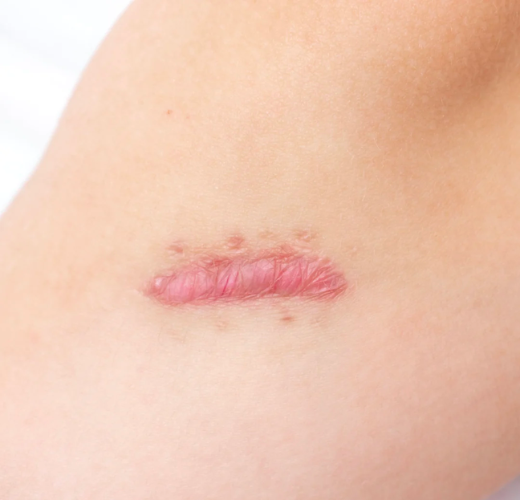You don’t have to live with raised, red scars

Surgery and injuries inherently result in scars due to the skin’s natural healing process, but there is definitely a distinction between a normal scar and those that may become red, raised and uncomfortable at times. In many cases, especially in those with darker skin tones, the healing process creates a keloid scar (although I would have to see it to make a definite diagnosis).
Keloid scars are generally larger than the original injury that caused it, and the scar itself appears puffy. While other scars fade over time, keloids can remain a different color than the surrounding skin permanently—and they can be itchy from time to time. A keloid scar often forms when the site of the injury is subjected to tension during the healing process, although genetics may play a role as well.
Depending on the scar, Kenalog injections may be the best initial treatment. These steroid injections usually help flatten the scar and restore more normal skin color over time. However, a series of injections is necessary for optimal results because it’s important to be conservative with this drug since injecting too much can lead to a depressed scar.


